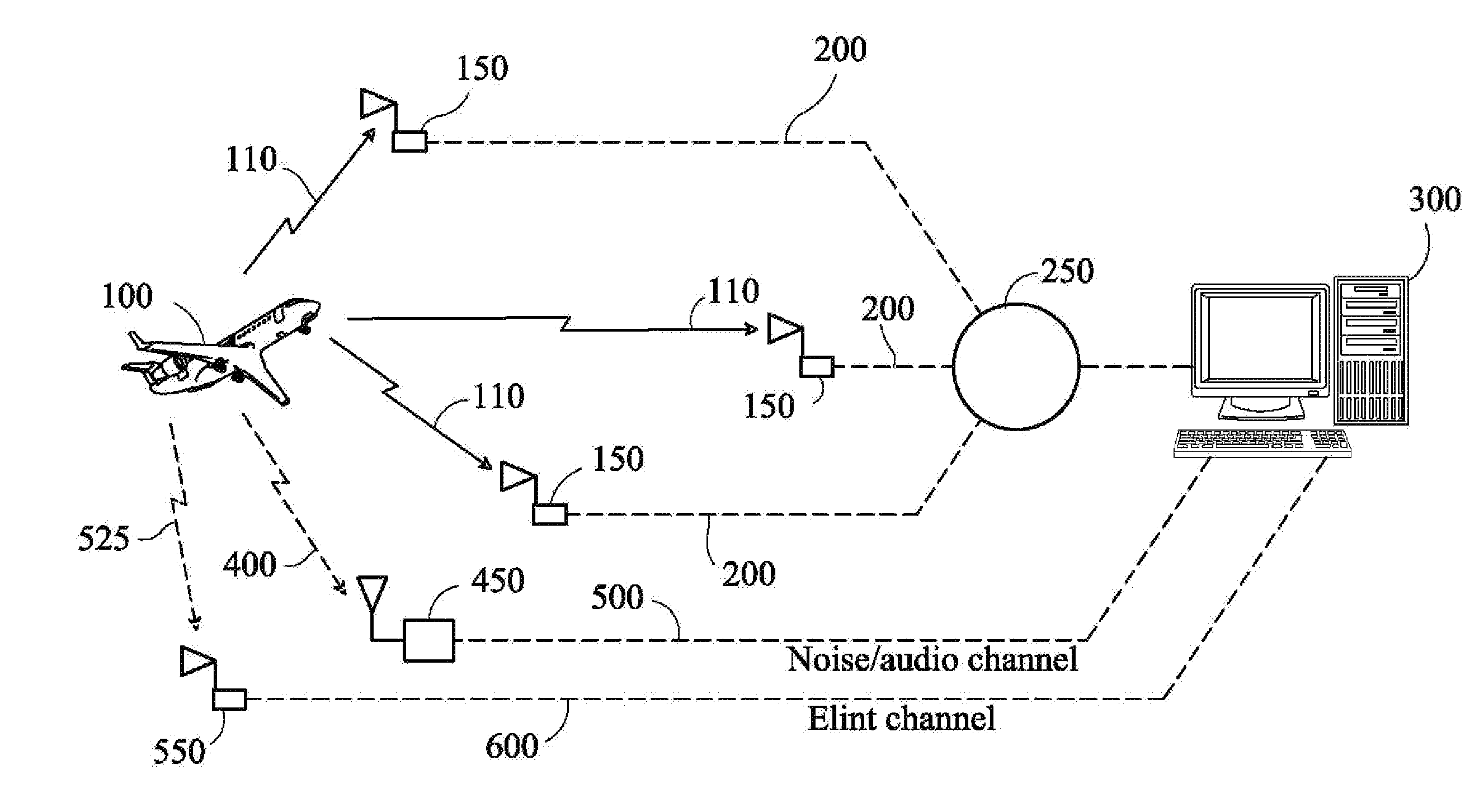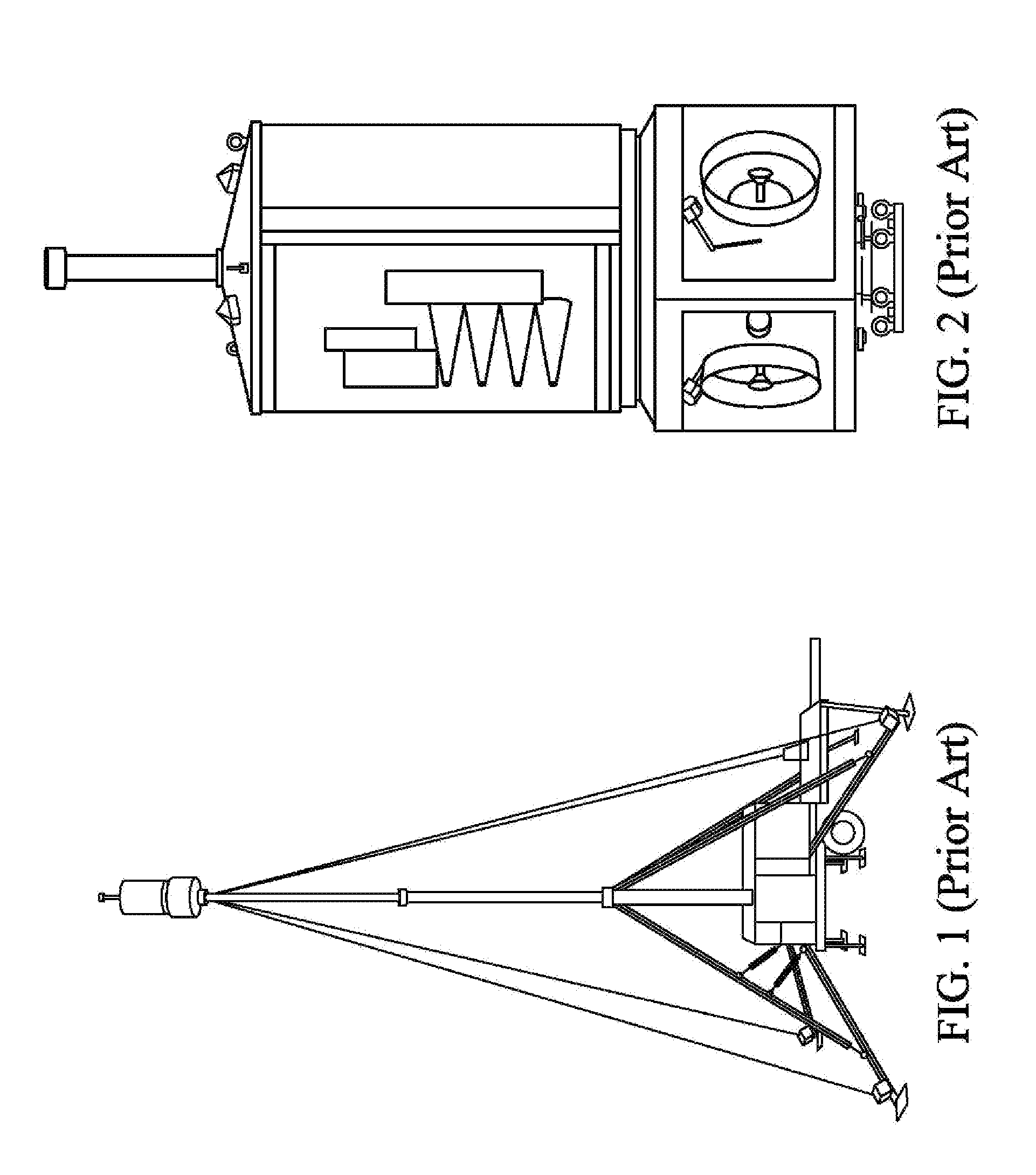Deployable intelligence and tracking system for homeland security and search and rescue
a tracking system and homeland security technology, applied in the direction of direction finders, instruments, measurement devices, etc., can solve the problems of gps guidance systems being susceptible to jamming, affecting the positioning of sensors, and requiring expensive five-element null-steering antennas in guidance systems
- Summary
- Abstract
- Description
- Claims
- Application Information
AI Technical Summary
Benefits of technology
Problems solved by technology
Method used
Image
Examples
Embodiment Construction
[0084]FIG. 12 is a block diagram illustrating the Coastal Defense and Homeland Security, Search and Rescue (Coastal and Mountainous Terrain) and ADS-B Back up and Validation of the present invention. In this embodiment there are essentially three channels of data from the aircraft 100 analyzed by the system in real time, one is flight tracking data based on multilateration of aircraft emitted signals 110 including transponder, DME, JTIDS, and various other pulse emitters located on the aircraft. The emitter signals are then time-stamped, either at the sensor 150 or at the central server 250 to perform TDOA analysis and pinpoint the location of the aircraft using multilateration techniques. Similarly, each sensor 150 may detect the aircraft's annunciated position as would be used by Automatic Dependent Surveillance Broadcast (ADS-B). The sensors 150 may be stationary and located on the ground, towers, or at sea on buoys, or they may be dynamic and located on marine vessels, aircraft,...
PUM
 Login to View More
Login to View More Abstract
Description
Claims
Application Information
 Login to View More
Login to View More - R&D
- Intellectual Property
- Life Sciences
- Materials
- Tech Scout
- Unparalleled Data Quality
- Higher Quality Content
- 60% Fewer Hallucinations
Browse by: Latest US Patents, China's latest patents, Technical Efficacy Thesaurus, Application Domain, Technology Topic, Popular Technical Reports.
© 2025 PatSnap. All rights reserved.Legal|Privacy policy|Modern Slavery Act Transparency Statement|Sitemap|About US| Contact US: help@patsnap.com



